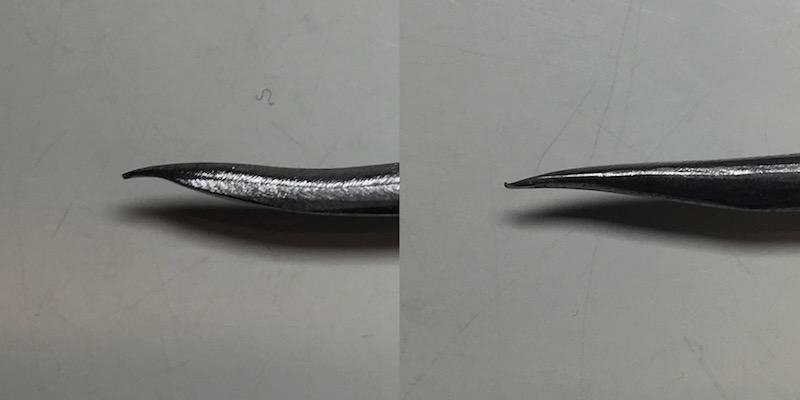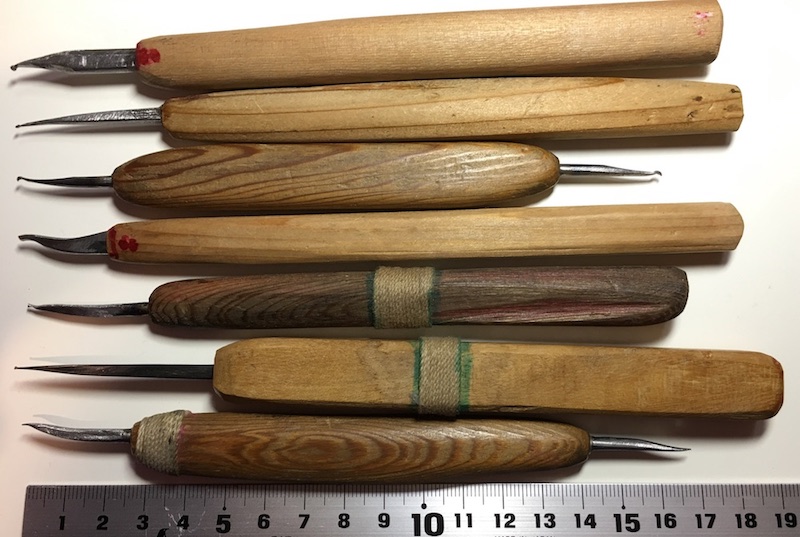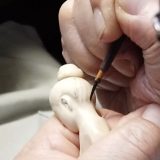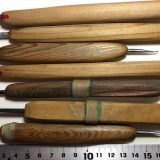This video is a spin-off of the series “From middle to finishing processes of a face model.”
In this video, my father demonstrates various scrapers that are suitable for carving a face, particularly the area under the nose and upper lip, as well as around the neck.
The photo at the beginning of this post shows the scrapers used and mentioned in the footage, arranged from top to bottom according to the order of their mention.
The top one was originally a woodcarving tool, and my father modified it into a hidari-ba scraper. The second scraper, which appears around 4:04 in the video, is a round one known as otama (also mentioned in the part 2 of the series).
To supplement my father explanations in the video, the following image shows two faces in profile and how the blades of these two scrapers work.
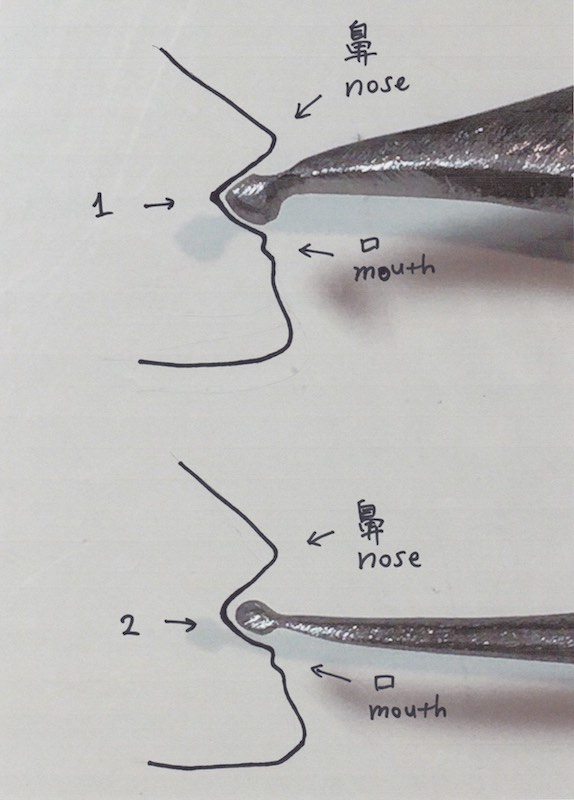
As for the top one, the left-most edge has a square corner and a curved bottom. The corner is suitable to carve the part (pointed as 1 in the image) where the nose joins the upper lip, while the curved edge is good to shape the upper lip (and the ridge of the upper lip).
Although the second tool (the otama) might generally be used to carve this area, its round groove (pointed as 2 in the image) would result in the boundary of the nose and the upper lip somewhat undefined. To avoid this, my father made the first one.

Incidentally, most of the woodcarving tools are made of steel sandwiched between soft iron, just like Japanese swords are (you might get the idea of the structure from the image of the reverse side of the blade). My father says that, if you are to modify a woodcarving tool into a hidari-ba scraper, it is important to use the steel part in the middle rather than the sides (iron), even though the edges may look desirable to make a square-cornered blade. The point is, the hidari-ba is usually made of steel alone, and so the blade has to be in steel rather than in iron.
The third tool appears around 4:46.

This tool with two blades is an invention of my father, while an ordinary hidari-ba scraper has only one blade. He came up with the idea of a tool having two blades that are similar in size while slightly different in shape or angle. This comes in handy when, for example, you are carving the bottom of the nose with a blade curving upward and then you want to carve the same area with a blade curving downward. Since this tool has both of them, you don’t have to change one scraper to another.
In the video, my father draws the shape of two blades, and the actual blades are as follows. These blades are known as tsurukubi (lit. crane neck/head). These are small in size.
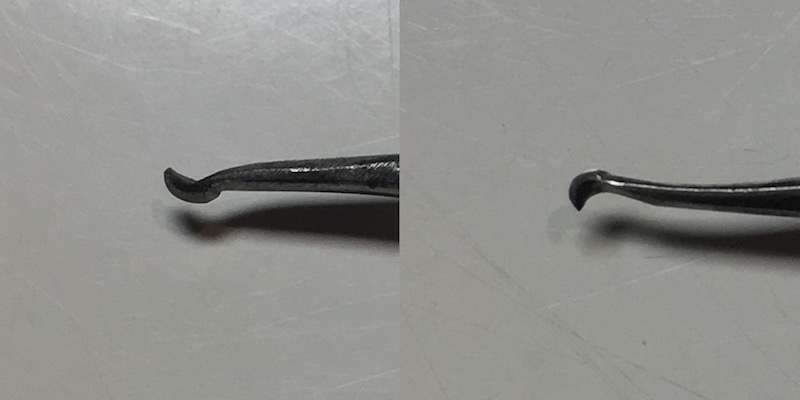
The fourth scraper from top is a seal-carving knife which my father modified into a hidari-ba scraper. It appears around 7:56, and the following is the blade of it.
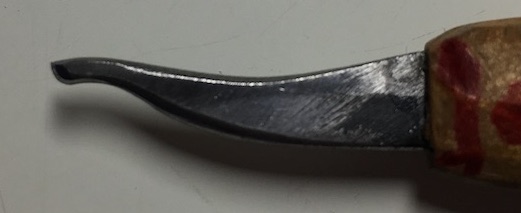
The fifth and sixth tools, mentioned around 14:20, are known as jisarai (lit. ground scrapers). The following photo shows the tips of the blades.
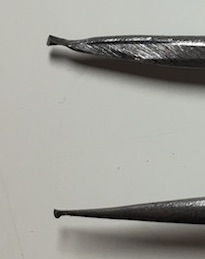
The bottom tool appears around 17:57. This has two blades.

The blades resemble each other, but they are slightly different in shape.
